
–– The newsletter on wine and wine travel ––
–– Read by wine lovers and wine professionals all over the world ––
–– On the internet since 1996 ––
Wine is not just a drink
 Were we wrong when we said last month that you should not over-estimate the value of ageing wine? (Do you have ageing-mania?) Cellaring wine doesn’t always give you what you wish for. One reader commented: “In our little wine tasting group, we recently solemnly uncorked a fairly old Bordeaux. The usually open discussion about the wine’s character, pros and cons, qualities or not, value etc. did not ensue. We sat quiet. Looked at the impressive bottle. Some took pictures of the label and sent to acquaintances. Of course, it was very old!” (Thank you, Olle.) You can interpret that in many ways.
Were we wrong when we said last month that you should not over-estimate the value of ageing wine? (Do you have ageing-mania?) Cellaring wine doesn’t always give you what you wish for. One reader commented: “In our little wine tasting group, we recently solemnly uncorked a fairly old Bordeaux. The usually open discussion about the wine’s character, pros and cons, qualities or not, value etc. did not ensue. We sat quiet. Looked at the impressive bottle. Some took pictures of the label and sent to acquaintances. Of course, it was very old!” (Thank you, Olle.) You can interpret that in many ways.
This month we say: there are plenty of good reasons to put down wine in your cellar. So, let’s take a closer look.
Almost all wines made today are delicious to drink when they are put on the market. Some wines do get better with ageing. With some time in the cellar (2, 3 years or even 5, 10 or more) they change and might even improve. Some of the rough edges may be smoothed off. Some new and exciting aromas may develop with age. Yes, there are plenty of wines that are worth cellaring. In fact, maybe more than you think. Of course, the classic reds to cellar. But also many whites can develop really interesting aromas, even light, refreshing whites may become more subtle and complex with age. Swiss chasselas and some muscadet come to mind. But also many others. Sometimes they don’t necessarily get much better, but just different, and that’s fun too. (But they never spoil. We’ve never had a wine that was too old and “dead”.)
But there are other reasons to cellar wines, maybe even more important reasons, as one of our readers pointed out:
“To me, there are a couple of extra reasons to age wine. Ageing or saving a bottle for 10-15-20 years for that special occasion and trying to anticipate when would be just the right moment to open the wine is for me one of the thrills (or disappointments) of ageing wine. Anticipating just the right moment that will create that special memory that wine is all about. Especially after holding the bottle in your hands many times over the years before putting it back in the cellar. You cannot get that feeling by drinking a wine acquired a month ago. Another aspect that my wife and I practice is buying wine whenever we travel and then drinking it years later revisiting those great memories that the trip gave us.” (Thank you for the quote Kristian!)
Exactly. Wine is not just a drink; it is a catalyst for memories and emotions.
Bringing up an old bottle of wine from the cellar. Maybe thinking of what happened then. The Bordeaux 1990 you might have; ah, that was the year we first settled in France, a sunny autumn. Or the 1959 vin doux naturel that I tasted in Roussillon a while back (still on sale if you want a bottle). I was barely born, and Algeria was still part of France. A bottle we brought home from travelling in Moldova a few years back opened recently; they have just elected a new president that may move them to a more stable democracy, let’s hope it works well. And many others.
Wine is not just a drink. It’s about the mind, about people, history, meetings, culture, events, travel… So there are plenty of good reasons to put bottles in the cellar.
But don’t over-do it. Ageing wine is not a purpose in itself, just an enabler, a catalyst.
Do share your thoughts and comments with us if you want. Do send us an email.
A new book
There is less reading this month in the Brief than usual and fewer articles on BKWine Magazine (but there’s still a good dose of reading). We have been busy.
We have put the finishing touches on the text for our next book (to be published in Swedish, at least initially), and it has taken up all our time, so we hope you will excuse us. Book number 11. This time, it is a book for those who want to know more about wine, EVERYTHING about wine. It is not a beginner’s book but an intermediate level text about the world of wine. It is about all the world’s wine countries, but also about how to grow and make wine, how to taste wine, how to pair it with food, all the (most important) grapes varieties… And much more.
It is not really a textbook, but it can very well be used as such, at an intermediate level. It is not a superficial introduction, nor does it go far down in every detail (as some of our other books do, such as Champagne, Organic Wine or The Creation of a Wine does). It is for those who already know a bit about wine but who want to learn more.
If all goes well (these times, you know), it will be published this spring.
Now that the manuscript has been completed, we start planning for next year’s wine tours. Again, if all goes well (vaccine :-) ), we will have two tours in the spring to the two great classics wine regions Bordeaux and Champagne. And in the autumn there will be two more. We are also planning the winter tours to the southern hemisphere in 2022.
Wine school
As a small compensation (for the “less reading than usual”), I can mention that we have a new section on BKWine Magazine which we call “wine school”. There we collect all the articles that are a little more in-depth or on specific fact-based subjects, grape varieties, wine regions, winemaking etc. You can find the “wine school” on the welcome page of BKWine Magazine, if you scroll down a bit, eight randomly selected articles every time you go to the page plus a link to read them all. Browse the wine school and tell us what you think!
We, the two of us, are really eager to travel again and maybe you too? When the time comes, plan a tour with us at BKWine. We create and manage wine tours because we want to share with you all the fantastic things that you can experience in the wine regions and share our knowledge.
Enjoy the Brief!
Britt & Per
If you appreciate what we do, you can help us:Tell your friends about the Brief or send it to them.
Like us and follow us on social media:
What’s on at BKWine Tours
BKWine is also one of the world’s leading wine tour operators. Here’s what we currently have on our scheduled wine tour program:
- Bordeaux, April 21-25, 2021
- Champagne, May 19-23, 2021
- Champagne, September 22-26, 2021 (possible combination with Bordeaux)
- Bordeaux, September 29 – October 3, 2021 (possible combination with Champagne)
- Chile-Argentina, January 2022
- South Africa, February 2022
- New Zealand, March 2022
We also make custom designed wine tours.
We’re different than most other wine tour operators. We are people who know wine inside out, who travel constantly in wine regions, who write award winning books about wine. Who do this out of passion. Our tours are different from others. More in wine tours: BKWineTours.com.
Read our booksWe have written several wine books, ten at the last count. Unfortunately, only one of them has been translated to English; the others are (so far) only available in Swedish. This is the one that is available in English: All our books are on wine, but on different subjects: wines of the Languedoc, wine growing and wine making, the wines of France, Tuscany, Bordeaux, Piedmont, Burgundy, Champagne. Several have won prestigious prizes and awards from Gourmand International, OIV and others. Read more on our wine books. |
News from the world of wineWhat’s been happening in the world of wine recently. |
The winner of Best Dressed Wine, perhaps with a scent of petroleum?
|
China imposes import duties on wine from Australia
|
Lower planting density in Champagne gives surprising results
Some interesting changes have been seen. It is to be expected that the vines have better resistance to drought. Competition for water is less. More surprising is that the acidity is better preserved in the grapes. The vines are also less sensitive to spring frosts and the work in the vineyard is easier. Maxime Toubart, president of SGV, Syndicat Général des Vignerons, is positive. Now everyone else involved will have their say, but Toubart hopes the experiment can continue on maybe 2-3% of the surface of Champagne. Read more: vitisphere Travel: One way to know more is to travel in Champagne with BKWine. |
Good ports for Christmas or anytime
Fonseca Guimaraens Vintage Port 2008 (~30 euro). Fonseca is one of the larger houses and is part of the Fladgate Partnership together with Taylor’s, Croft and Krohn. Guimaraens Vintage is made in the years that are not considered powerful enough for a classic vintage. However, Guimaraens 2008 is intense enough in both taste and concentration and also at half the price of a classic Fonseca vintage. Excellent to drink now. Quinta do Tedo Vintage Port 2003 (~90 euro). Quinta Do Tedo is a family business run by the Frenchman Vincent Bouchard and his American wife Kay. The grapes for their lovely port wines come from a so-called field blend, a vineyard with about 20 different local grape varieties, dominated by the high-quality touriga nacional. The Tedo vineyard is now organically certified. Vintage 2003 is a classic year, smooth, mature and ready to drink. On its own, with cheese or with dessert. A tawny port is something completely different than a vintage. While a vintage can be a little rough despite its sweetness, a tawny is caramel sweet and smooth. We recommend Wine & Soul Tawny Porto 10 Years (~30 euro). Wine & Soul is run by the couple Sandra Tavares da Silva and Jorge Borges, both very skilled winemakers. This tawny is complex and nuanced, and incredibly tasty. |
All I want for Christmas is a few bottles of good wines
Sauska Tokaji Furmint 2019 (~10 euro). The Hungarian region of Tokaj is world famous for its amazing sweet wines made with noble rot grapes. However, you should also try the dry wines, made from the same grape, furmint. Thanks to this grape the wines have an unusually high acidity often combined with a full body and a creamy honey note. You get great character for not much money. If you don’t find this wine made by Krisztián Sauska, just look for another furmint. Tim Adams Semillon 2019, Mount Lofty Ranges, Clare Valley, South Australia (~15 euro). Dry semillon wines are not easy to find but the Australians make some really good ones. We love this grape. It has a lovely texture and body and is a great food wine. Most semillon wines are worth trying. Mendel Cabernet Sauvignon 2019, Mendoza, Argentina (~17 euro). Mendel Wines is run by the well-known Argentinean profile Roberto de la Mota. He actually makes a very good Semillon as well. This young Cabernet Sauvignon is already very balanced in a nuanced, elegant style. Terres Dorées L’Ancien Beaujolais 2019, Domaine des Terres Dorées (~15 euro). Beaujolais is back in fashion. Not Beaujolais Nouveau so much, it now represents only 20 % of the sales, but the “real” Beaujolais wines. Domaine des Terres Dorées is one of our favourite producers in the region. Here you get the wonderfully refreshing and juicy fruit that you expect from a good Beaujolais but combined with structure. |
More organic wine in Chile
Travel: Join us at BKWine on a wine tour to Chile (and Argentina), two countries that have some outstanding wines. Read: If you want to know more you can read our book on organic, biodynamic and natural wines. Read 2: More on organic wine in our series of articles on organics, biodynamics and sustainable. |
Fewer and fewer grape varieties dominate the vineyards
The striking thing when looking at grape statistics is that there are so few grapes that dominate. Worldwide, 16 grapes account for 50% of the total surface, down from 21 grapes twenty years ago. In the New World, only seven grapes account for 50% of the surface of these countries (CS, merlot, chardonnay, syrah, merlot, sauvignon blanc, malbec and pinot noir). Which is perhaps not too bad. There’s still 50% left for the wine enthusiast. The University of Adelaide compiles these fascinating grape statistics. |
Wine ToursSome information on our current and future wine tours. Book a wine tour with the “world’s top wine tour operator” today (or when you feel like travelling to wine country). |
Two classic wine tour destination with BKWine in spring and autumn 2021: Bordeaux and ChampagneIn the spring and autumn of 2021, we offer wine tours to two amazing wine regions, Bordeaux and Champagne. We hope we will all be able to travel again at that time. If you are interested in a tour, please contact us. The spring program is available on the website and also part of the autumn tours. The autumn programmes will be completed very soon. Bordeaux, a beautiful city and a world-renowned wine region
Wine tour to Bordeaux, April 21-25 Wine tour to Bordeaux, September 29 – October 3 (This autumn tour will also be offered in combination with the Champagne tour; more details will soon be available on our website) Champagne, a wide variety of styles
Wine tour to Champagne, May 19-23 Wine tour to Champagne, September 22-26 (this tour will also be offered in combination with the Bordeaux tour; more details will soon be available on our website) |
Discover four New World wine countries in winter 2022 on a wine tour with BKWineWe will soon have finished the programmes for our long-distance tours to the New World 2022. We hope and believe that all borders have then been opened. A wine tour to the southern hemisphere in just over a year is really something to look forward to right now. Our three long-haul tours go to Chile-Argentina, New Zealand and South Africa. The wines in all four of these countries have changed and improved enormously in recent years. There is a great enthusiasm among the producers to show what they can do. The fact that the countries also offer magnificent scenery and wonderful gastronomy makes it even better. If you are interested in any of these three trips, contact us with your questions. Chile and Argentina in January 2022
The programme for South America, Chile and Argentina 2022 is not entirely settled yet, but it will be similar to the South America wine trip 2021. South Africa in February 2022
The travel programme for South Africa 2022 is not entirely settled yet, but it will be similar to the South Africa wine trip 2021. New Zealand, March 2022
The programme for New Zealand 2022 is not entirely settled yet, but it will be similar to the New Zealand wine trip 2021. Contact us if you have any questions or want more information! |


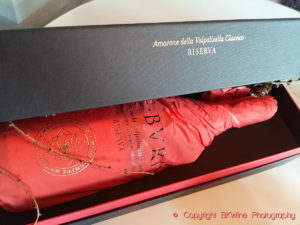 Designers have a little more leeway to be creative when working with Bag-in-Box compared to bottles. In November, the best-designed Bag-in-Box was voted for in France. The organizers of the wine competition “Best Wine in Box” also organize “Best Dressed Wine”. The 2020 Palme d’Or went to French Fuel Rouge from the cooperative Vignerons d’Aquitaine, which received the award for its original and amusing trompe l’oeil. Only wines that have won a medal in the wine competition may participate in the design competition. Both what is on the inside and on the outside of the box is important. Look at the picture of the winning box here:
Designers have a little more leeway to be creative when working with Bag-in-Box compared to bottles. In November, the best-designed Bag-in-Box was voted for in France. The organizers of the wine competition “Best Wine in Box” also organize “Best Dressed Wine”. The 2020 Palme d’Or went to French Fuel Rouge from the cooperative Vignerons d’Aquitaine, which received the award for its original and amusing trompe l’oeil. Only wines that have won a medal in the wine competition may participate in the design competition. Both what is on the inside and on the outside of the box is important. Look at the picture of the winning box here:  Relations between China and Australia have been strained for some time. At the end of November, China imposed import taxes on Australian wines of up to 212%, a major blow to the Australian wine industry. China is a very important export market for the country, by far the largest in terms of value (however, the UK is the largest, by far, in volume). China accuses Australia of price dumping its wines, which Australia denies. Read more:
Relations between China and Australia have been strained for some time. At the end of November, China imposed import taxes on Australian wines of up to 212%, a major blow to the Australian wine industry. China is a very important export market for the country, by far the largest in terms of value (however, the UK is the largest, by far, in volume). China accuses Australia of price dumping its wines, which Australia denies. Read more: 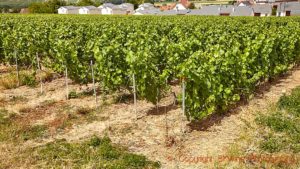 The wine industry is very aware that it needs to adapt to cope with climate change. Champagne has been experimenting with lower planting density for some time. Champagne has a high planting density, 8000 vines per hectare. The rules for the region state that there must be a maximum of 1.50 meters between the rows and 90 cm to 1.50 meters between the vines. For more than ten years, experiments have been underway with 4,000 to 5,500 plants per hectare instead of the usual 8000.
The wine industry is very aware that it needs to adapt to cope with climate change. Champagne has been experimenting with lower planting density for some time. Champagne has a high planting density, 8000 vines per hectare. The rules for the region state that there must be a maximum of 1.50 meters between the rows and 90 cm to 1.50 meters between the vines. For more than ten years, experiments have been underway with 4,000 to 5,500 plants per hectare instead of the usual 8000.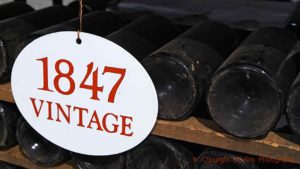 Many a bottle of port will be opened over Christmas. We recommend some of our favourites.
Many a bottle of port will be opened over Christmas. We recommend some of our favourites.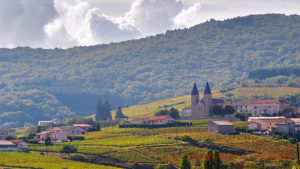 Four delicious wines that give to someone for Christmas, or to drink yourself.
Four delicious wines that give to someone for Christmas, or to drink yourself.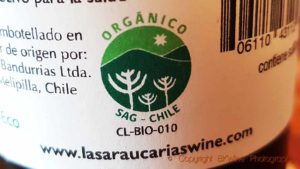 Emiliana in Chile, one of the world’s largest organic and biodynamic wine producers, is expanding. A completely new vineyard of almost 300 hectares, previously uncultivated land, will be planted in the Maule region. The grapes will be cabernet sauvignon, syrah and carmenère and the first harvest will be in 2023. The grapes will primarily be used for Emiliana’s very popular range called Adobe, the best-selling organic wine in Chile but which is also doing very well in the export market. (Adobe is actually an old-fashioned sun-dried clay brick used as a building material.) Emiliana has seen an increase in demand for organic wines worldwide. Emiliana is owned by Chile’s largest wine company Concha y Toro. Read more:
Emiliana in Chile, one of the world’s largest organic and biodynamic wine producers, is expanding. A completely new vineyard of almost 300 hectares, previously uncultivated land, will be planted in the Maule region. The grapes will be cabernet sauvignon, syrah and carmenère and the first harvest will be in 2023. The grapes will primarily be used for Emiliana’s very popular range called Adobe, the best-selling organic wine in Chile but which is also doing very well in the export market. (Adobe is actually an old-fashioned sun-dried clay brick used as a building material.) Emiliana has seen an increase in demand for organic wines worldwide. Emiliana is owned by Chile’s largest wine company Concha y Toro. Read more: 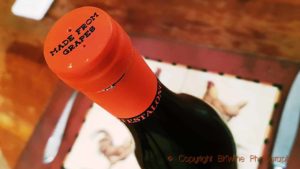 Wine enthusiasts tend to like unusual grape varieties. What is unusual and common however, varies with time. The grape varieties that are the most grown today are not the same as 20 years ago. Since 1990, cabernet sauvignon and merlot have doubled their surface, tempranillo and chardonnay have tripled theirs, syrah has gone from 36th to 6th place in the top ten list. Sauvignon blanc and pinot noir have increased in a similar way.
Wine enthusiasts tend to like unusual grape varieties. What is unusual and common however, varies with time. The grape varieties that are the most grown today are not the same as 20 years ago. Since 1990, cabernet sauvignon and merlot have doubled their surface, tempranillo and chardonnay have tripled theirs, syrah has gone from 36th to 6th place in the top ten list. Sauvignon blanc and pinot noir have increased in a similar way. It is quite an experience to see the world-famous chateaux of Bordeaux and their often vast vineyards. In the spring the growing season has just started and in the autumn, harvest is maybe underway. Whatever the season, there are always activities in the field and in the cellar. Join us and you will learn all the details that make a Bordeaux one of the world’s best wines.
It is quite an experience to see the world-famous chateaux of Bordeaux and their often vast vineyards. In the spring the growing season has just started and in the autumn, harvest is maybe underway. Whatever the season, there are always activities in the field and in the cellar. Join us and you will learn all the details that make a Bordeaux one of the world’s best wines.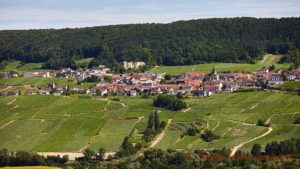 Champagne is close to Paris but as soon as you reach the wine region the landscape changes from flat agricultural land to charming slopes and quaint wine villages. The city of Reims, where we will be staying, is well worth a visit. It has one of the most beautiful cathedrals in France. Champagne has hundreds of years of history and although you will discover a modern wine region you will see that tradition still play its part. We will show you all the different faces of Champagne, big houses, impressive ageing cellars, small and creative growers. Lunches with champagne throughout, an experience in itself.
Champagne is close to Paris but as soon as you reach the wine region the landscape changes from flat agricultural land to charming slopes and quaint wine villages. The city of Reims, where we will be staying, is well worth a visit. It has one of the most beautiful cathedrals in France. Champagne has hundreds of years of history and although you will discover a modern wine region you will see that tradition still play its part. We will show you all the different faces of Champagne, big houses, impressive ageing cellars, small and creative growers. Lunches with champagne throughout, an experience in itself.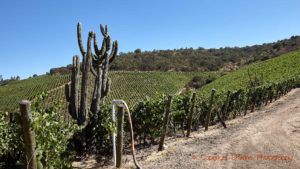 Argentina and Chile, two neighbouring countries but with very different wine styles. We start in Argentina, visit Buenos Aires and Mendoza, taste malbec and eat empanadas and fantastic grilled meat. We take our bus across the Andes, a breath-taking drive, to Chile, where we visit the new cool wine regions by the sea and Colchagua with their high-quality red wines. We will stay in the small charming town of Santa Cruz and the beautiful Viña del Mar. We end our tour in Santiago, the capital.
Argentina and Chile, two neighbouring countries but with very different wine styles. We start in Argentina, visit Buenos Aires and Mendoza, taste malbec and eat empanadas and fantastic grilled meat. We take our bus across the Andes, a breath-taking drive, to Chile, where we visit the new cool wine regions by the sea and Colchagua with their high-quality red wines. We will stay in the small charming town of Santa Cruz and the beautiful Viña del Mar. We end our tour in Santiago, the capital.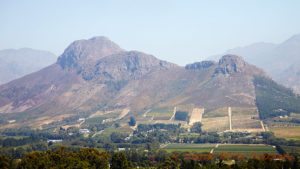 South Africa is a New World country with a long wine history, more than 350 years. But only in the 1990s did we start drinking the wines from here and since then a lot has happened, both with the quality and the style of the wines. Today, South Africa is a very interesting wine country. We visit both well-known Stellenbosch as well as Franschhoek, but also Walker Bay down on the south coast and Swartland further north which attracts more and more talented winemakers. We enjoy stunning nature, gastronomy and of course we also visit Cape Town.
South Africa is a New World country with a long wine history, more than 350 years. But only in the 1990s did we start drinking the wines from here and since then a lot has happened, both with the quality and the style of the wines. Today, South Africa is a very interesting wine country. We visit both well-known Stellenbosch as well as Franschhoek, but also Walker Bay down on the south coast and Swartland further north which attracts more and more talented winemakers. We enjoy stunning nature, gastronomy and of course we also visit Cape Town.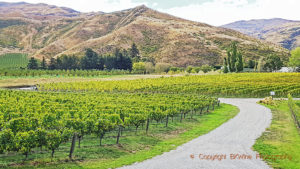 New Zealand is the youngest of the New World countries. Success has come quickly. Today, the whole world drinks wine from New Zealand. It is a long journey to get there but once you have arrived, we will show you almost the whole country. Our bus will take us from Auckland down to Queenstown which includes a 3-hour boat ride between the North Island and the South Island. Our New Zealand tour offers many great experiences. And the wine is one of them of course. We will get to know many of the country’s wine regions, including Marlborough with its sauvignon blanc and magnificent, mountainous Central Otago with its pinot noir.
New Zealand is the youngest of the New World countries. Success has come quickly. Today, the whole world drinks wine from New Zealand. It is a long journey to get there but once you have arrived, we will show you almost the whole country. Our bus will take us from Auckland down to Queenstown which includes a 3-hour boat ride between the North Island and the South Island. Our New Zealand tour offers many great experiences. And the wine is one of them of course. We will get to know many of the country’s wine regions, including Marlborough with its sauvignon blanc and magnificent, mountainous Central Otago with its pinot noir.





